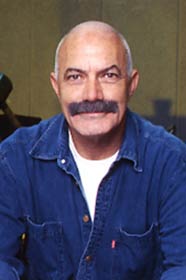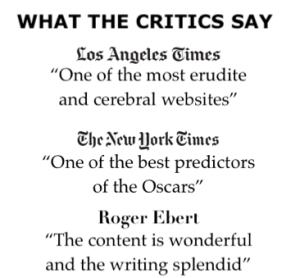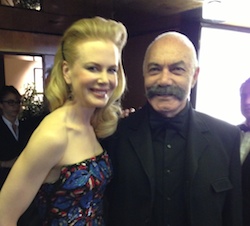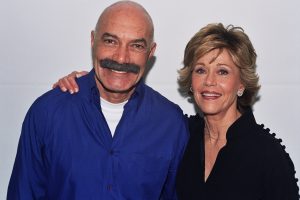Method Acting Elevated Many Films: ‘The Godfather’ to ‘The Lost Daughter’
The author of a book on the technique derived from the theories of Konstantin Stanislavski breaks down five landmark screen performances — including Olivia Colman’s recent Oscar-nominated turn.

During the second half of the 20th Century, the Method — an acting technique codified by Lee Strasberg that draws on the individual actor’s idiosyncrasies, psychology and emotion to help breathe life into their roles —transitioned from insurgent movement to dominant establishment to an often-mocked and misunderstood long twilight in the popular consciousness.
It revolutionized acting, writing and directing, and became almost synonymous with American performance. Strasberg, who ran the Actors Studio and taught both privately and at various schools, wasn’t alone in leading this revolution. He had several rivals in Stella Adler, Sanford Meisner, Robert Lewis, Uta Hagen and others, and all of them traced the roots of their teaching to the Russian director and actor Konstantin Stanislavski, who was arguably the first person to create a technique that approached the actor’s inner life, creative spirit and psychology alongside her voice and body.

In the aftermath of that revolution, we can reassess its impact.
Here are five films with Method (Method-style) performances:
Rod Steiger in The Pawnbroker (1965)
Rod Steiger was one of the important Method actors of his generation. In his supporting turns in films like On the Waterfront and his work in live TV drama (including the original Marty), Steiger defined highly emotional, committed, risk-taking acting.
But he also got a bad rap for being over the top or, as Sidney Lumet, who directed The Pawnbroker put it, making “tasteless choices.”
Great art often risks bad taste, however.
In The Pawnbroker, Steiger plays Sol Nazerman, a Jewish Holocaust survivor who manages pawn shop in Harlem, a front for a gangster named Rodriguez. When Nazerman learns that Rodriguez’s business includes sex work, he refuses to work for him anymore because his wife died in a camp brothel during the Shoah.
In his confrontation scene with Rodriguez, Steiger does almost inhuman things in their emotional extremity. The trembling over his face and body seems wholly unintentional, his weeping outside is control, his physical gesture filled with unsustainable intensity. It’s difficult to watch but rings the truth of experiencing trauma.
Sidney Poitier, Lee Grant: In The Heat of the Night (1967)
By the late 1960s, the Method was the dominant force in American screen acting.
Actors who didn’t study with Lee Strasberg, trained with Stella Adler, Sanford Meisner or another rivals in the Stanislavski-based instruction.
The Graduate starred Method actors Dustin Hoffman and Anne Bancroft, was directed by Mike Nichols, who had studied with Strasberg, and was co-written by Calder Willingham, who had risen to fame after the Studio adaptation of his book End as a Man
Bonnie and Clyde starred Actors Studio member Estelle Parsons, Method actors Gene Hackman and Faye Dunaway and Stella Adler student Warren Beatty. Director Arthur Penn was a mover and shaker at the Actors Studio and would eventually become its president.
But even more mainstream films like In the Heat of the Night relied on the Method talents of Sydney Poitier, Lee Grant and Rod Steiger, who finally won an Oscar for his performance. All three bring incredible nuance and a sense of presence and living in the moment to their performances which give the film a rich, detailed, nuanced quality that helps it transcend its liberal message picture origins. Just watch the scene in where Poitier tells Grant that her husband has been murdered. Watch how their bodies navigate all the little details of their relationship, and the way that race shapes this encounter between strangers. Watch how Poitier uses his body to keep Grant from leaving the room without threatening her, while Grant decides whether she, a proper Southern lady, will take a Black man’s hand and let him comfort her. The film is filled with little details like these that suffuse it with a power it otherwise would’ve lacked.
Al Pacino in The Godfather (1972)
The Godfather was Al Pacino’s third film, and his performance as Michael Corleone was so restrained, so subtext-driven, that he was almost fired off the movie. “What I thought was to low-key it early on,” he explained, “hoping that a character would emerge that will surprise you,” but studio execs were initially confused by his performance, by the way he leaned into Michael’s mysteriousness. Of course, that mysteriousness is key to the film’s power, and nowhere is that clearer than in the scene where his wife Kay (played by Meisner student Diane Keaton) confronts him about whether or not he has had his brother-in-law killed. Pacino and Keaton challenge one another to reach new heights in the scene, and it is the only moment where we get a glimpse of the titanic rage that would be such an important part of Pacino’s acting in the future. When he slams his hand on his desk and firmly shouts, “No!,” both Kay and the audience finally realize exactly how dangerous Michael is, exactly how much he’s been holding back and keeping in control. As always, Pacino’s eyes are the key to the scene and to the role. Watch how they seem to lit from within, almost supernatural and predatory, expressive beyond what normal humans can do.
The Method’s territory is that of the unsaid–the inexpressible desire, the buried subtext, the emotion that yearns to burst out.
Martin Landau, an Oscar-winning actor and teacher, said the key to the Method approach was to “find the emotion, and then find a way to allow it out, and then hold it back the way the character would, and if stuff leaks out that’s what’s supposed to happen.”
This suppression creates a compelling tension that also allows the actor to go big when the cathartic moment of release arrives.
Example: Sally Field’s famous raising of the sign “UNION” in Norma Rae. The film has other connections to the Method. Director Martin Ritt was a force at the Actors Studio and co-stars Sally Field and Ron Liebman were both members. In this scene, Field’s Norma Rae is about to be kicked out of the textile mill because she’s been organizing a union there. The scene starts at a high pitch of emotion, as Norma Rae screams that it will take the sheriff and the fire department to get her out of there, but it reaches a new peak of emotion as the scene becomes wordless. Field scrawls the word “UNION” on a piece of cardboard and stands on a table, pleading with her coworkers and defying the powers with simple yet deeply felt physical expression.
Olivia Colman in The Lost Daughter (2022)
Olivia Colman is not a Method actor. She studied at the Bristol Old Vic Theatre School, whose approach is rooted in classical English technique, and she began her screen career in sketch comedy.
For much of the Method’s history, the media put it in opposition to classical English technique as represented by Lawrence Olivier, but Colman’s performance in The Lost Daughter is far closer to that of American Method actor like Ellen Burstyn than to that of older generations of British acting like Helen Mirren.
Colman’s performance as Leda is built on what the Method prizes most: naturalism, subtext, neuroticism, hidden secrets, repressed emotions and wild, anarchic quality that can never quite be contained.
Isaac Butler’s new book, The Method: How the Twentieth Century Learned to Act, published by Bloomsbury.










